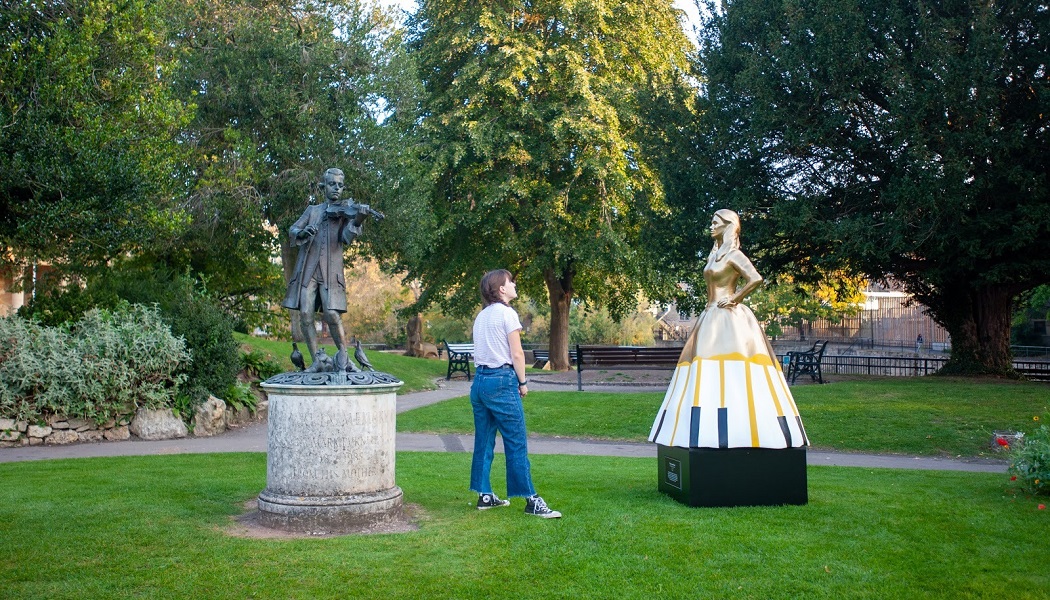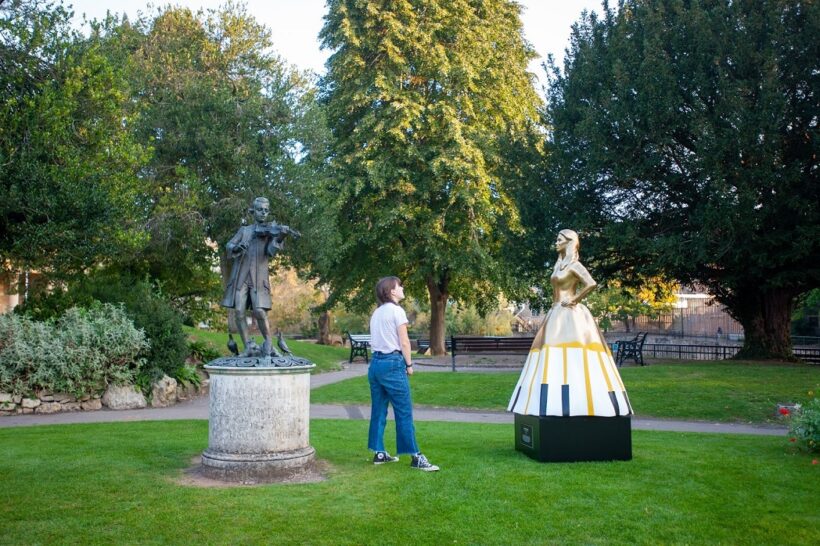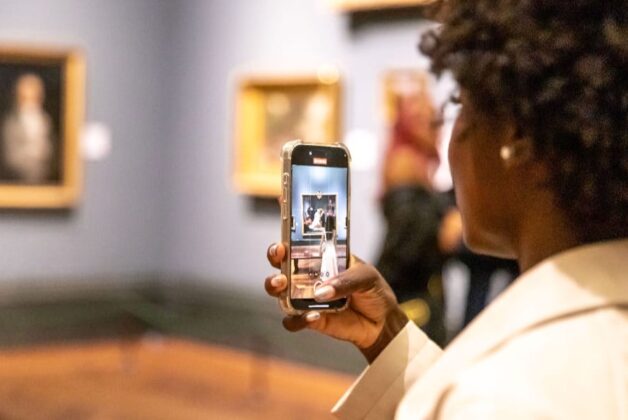All images: © Netflix UK & Ireland/Twitter
Promoting a new film which explores the fictional story of Enola Holmes, sister of Sir Arthur Conan Doyle’s world-famous detective Sherlock Holmes, Netflix has unveiled several statues of ‘overshadowed’ sisters adjacent to existing monuments of their well-known brothers.
The global streaming giant has installed gold statues detailing the achievements of women including the sisters of Charles Darwin, Amadeus Mozart and Thomas Hardy as part of its latest marketing push.
While the campaign is of course solely designed to promote the new movie, it has inadvertently tested the viability of reinterpretation of public art through addition rather than removal.
Gallery
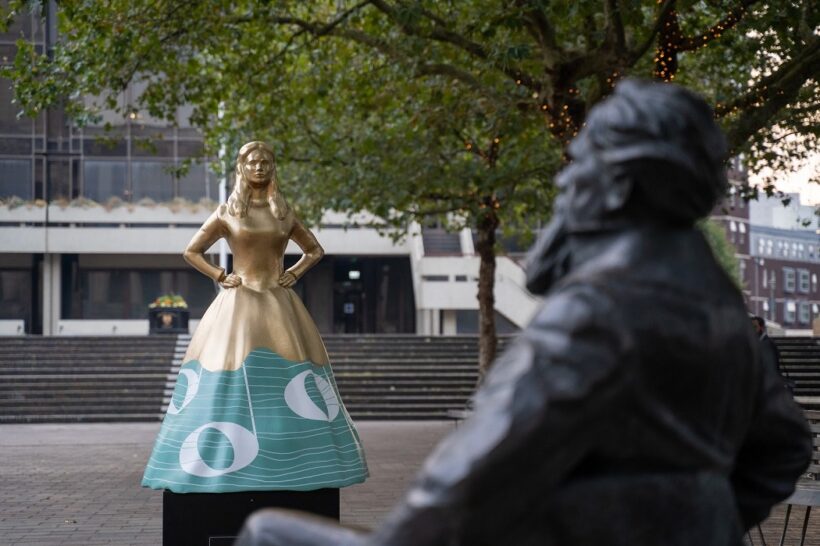
Frances Dickens, described by Netflix as a "talented pianist and singer who studied at the Royal Academy of Music under a former pupil of Beethoven" She was so gifted, it is claimed, the Dickens family prioritised her education over Charles's as they could only afford school fees for one child
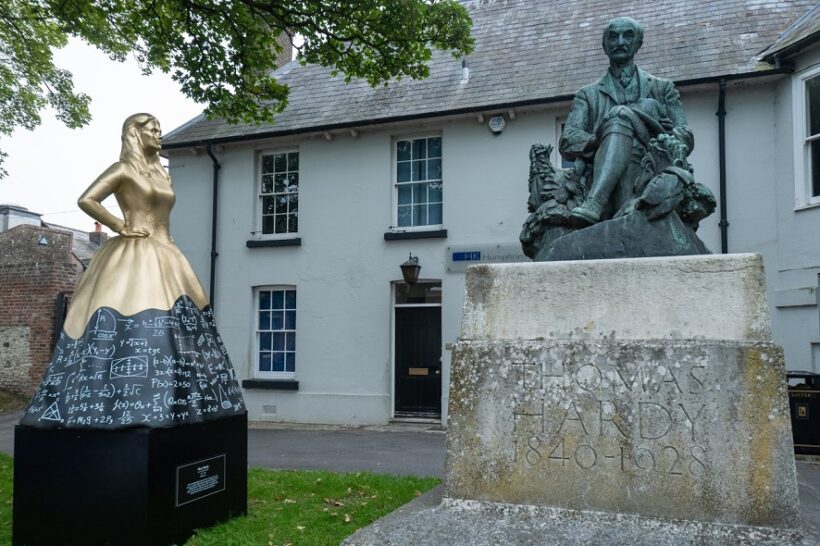
Poet Thomas Hardy’s sister Mary attended higher education and worked for several years as a teacher before being appointed Headmistress of Piddlehinton Village School. This was a significant achievement for any woman at the time, earning her much respect, Netflix notes.
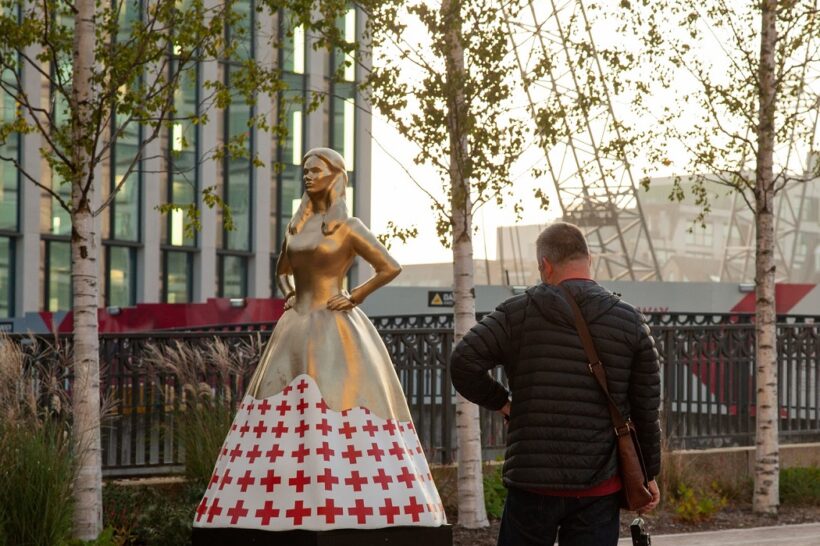
Princess Helena Victoria, sister of King Edward VII, was a founding member of the British Red Cross and President of the Royal British Nurses Association. Netflix says she was a champion of healthcare workers who fought for better working conditions, rights, and pay - all of which led to nurse registration
In a recent feature exploring the debates prompted by this summer’s Black Lives Matter demonstrations – which saw statues of Edward Colston and Robert Milligan removed from public spaces – Dr Errol Francis, artistic director and CEO of arts diversity charity Culture&, discussed the idea of reinterpreting items with colonial histories through new responsive artworks.
He pointed to the approach taken by Yinka Shonibare in his National Gallery shows Mr and Mrs Andrews Without Their Heads (1998) and Scratch the Surface (2007) as highly successful examples.
“When people are discussing removal, we should be steering the conversation onto reinterpretation because destroying pieces of history sets a dangerous precedent,” Francis told Advisor. “This kind of methodology would be really good.”

